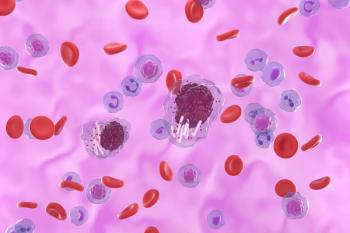
Number of Medications a Strong Prognostic Indicator in Lymphoma, CLL, MM
Key Takeaways
- Medication count serves as a proxy for comorbidity burden, impacting outcomes in lymphoma, CLL, and MM.
- Polypharmacy, defined as taking five or more medications, is associated with worse outcomes, including higher mortality and hospitalization rates.
Investigators found certain classes of prescriptions were also associated with outcomes, though they do not believe the association is necessarily a causal one.
The number of medications a patient is taking can serve as a strong predictive marker for patient outcomes in lymphoma,
The study was based on the premise that the number of medications a patient is taking is a good—and possibly superior—proxy for their comorbidity burden. It was
Corresponding author Christian Brieghel, MD, PhD, of the Danish Cancer Institute, and colleagues, explained the comorbidities are common in older patients and often act as a limiting factor for treatment options. The Charlson Comorbidity Index is a widely used and well-validated method of assessing comorbidity in cases of cancer and other diseases, they added.
Yet, Brieghel and colleagues said incorporating a patient’s prescription medication information into comorbidity analyses might help refine comorbidity assessment in cases “where the indication for a medication is narrow and specific for the underlying medical condition (e.g., antidiabetics for type 2 diabetes and antimicrobials against infections).” Routine biochemistry can also help refine the prognostic impact of comorbidity burden, they said.
One way to use prescription medications to characterize comorbidities is to note polypharmacy status. The term “polypharmacy” generally refers to patients who are taking 5 or more different medications at the same time. Previous research suggests those patients are
In the new study, Brieghel and colleagues decided to assess the prognostic value of a patient’s prescriptions or polypharmacy per se as a proxy for multimorbidity in lymphoid cancers.1 They gathered a prediagnostic one-year medication history from the Danish prescription registry for 46,803 newly diagnosed patients with either lymphoma, CLL, or MM. They said Denmark is an ideal venue for such an analysis because very few drugs are available without a prescription in the country.
Patients’ prescriptions were analyzed based on drug class, polypharmacy, and total number of prescription medications. Those data were compared against overall survival (OS), hospitalization, and severe infection rates, and then the results were adjusted for age, sex, and other confounding factors.
They found that polypharmacy was associated with worse outcomes, including a hazard ratio (HR) of 1.4 for OS, hospitalization, and severe infection (P < .001).
In addition, the investigators found that the more medications a patient was taking at diagnosis, the worse their outcomes. Patients taking 0 to 3 medications had an HR for OS of 1.0, while patients taking 4 to 7 medications had an HR of 1.2, those taking 8 to 11 medications had an HR of 1.4, and those taking more than 11 medications had an HR of 1.9. A similar pattern held true for hospitalization and severe infection.
Brieghel and colleagues also found that the classes of drugs patients took also had prognostic significance. For instance, immunostimulants and blood substitutes had a significant negative impact on OS, while gynecologicals and sex hormones were associated with favorable outcomes. The former group are likely to be people who had started supportive therapy prior to their cancer diagnosis, while the latter patients were more likely to be young and female, they noted. When adjusted for age and sex, sex hormones still had a positive prognostic value for OS, they said.
“Taken together, these results indicate that patients being prescribed certain medications most likely represent patient selection as the key factor of outcome rather than a causal effect of the medication itself,” the authors said, though they added that their study was not designed to report causality.
The investigators also found that, in patients with Hodgkin lymphoma, mantle cell lymphoma, and MM, the time to next treatment shrank with each additional medication.
They concluded that the number of medications a patient is taking can serve as a strong independent prognostic indicator and “should be considered a key baseline characteristic in randomized clinical trials and in clinical practice for LC (lymphoid cancer) patients.”
References
1. Brieghel C, Lacoppidan T, Packness E, et al. Polypharmacy independently predicts survival, hospitalization, and infections in patients with lymphoid cancer. Hemasphere. 2025;9(7):e70172. doi:10.1002/hem3.70172
2. Li Y, Zhang X, Yang L, et al. Association between polypharmacy and mortality in the older adults: A systematic review and meta-analysis. Arch Gerontol Geriatr. 2022;100:104630. doi:10.1016/j.archger.2022.104630
Newsletter
Stay ahead of policy, cost, and value—subscribe to AJMC for expert insights at the intersection of clinical care and health economics.









































